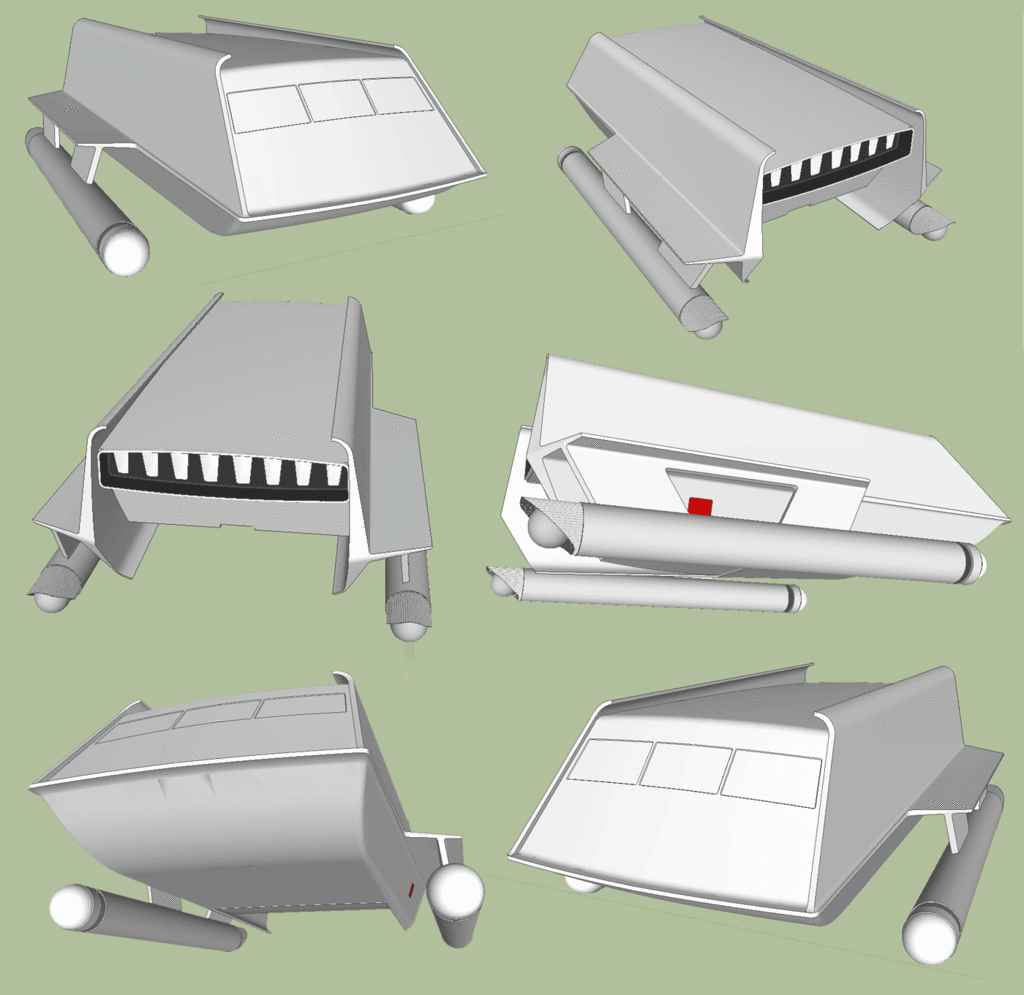The cargo pods are clearly TMP Starfleet issue.
...With various Starfleet and UFP symbology on them, too. Let's see if I can figure out how to link to another thread...
http://www.trekbbs.com/showthread.php?t=149571
It doesn't appear that the standard TOS shuttlecraft would have been much involved in providing Khan with his hut. Nor would any of the craft seen in TAS have been much good in that respect, unless we go for the external carriage idea. But we could just as easily postulate that a workbee train can be equipped with a tug more substantial than a workbee, and perhaps with clip-on wings as well, for deploying this package.
The simplest answer to the delivery question might be dropping, of course. Orbital velocity of the package could be killed by the starship, after which the package would drop at a relatively slow pace, slowed down further by small rocket engines or antigravs. It would then reach the denser parts of the atmosphere and continue to decelerate (or maintain slow rate of descent) with parachutes or, again, antigravs. No need for complexities like heat shielding or aerodynamics, then.
We don't really know how a TOS shuttle lands, either. Obviously, physical parachutes are never seen, but possibly antigravity is key to those landings as well. Aerodynamics could still be a concern whenever the shuttle engages in forward flight.
Timo Saloniemi




